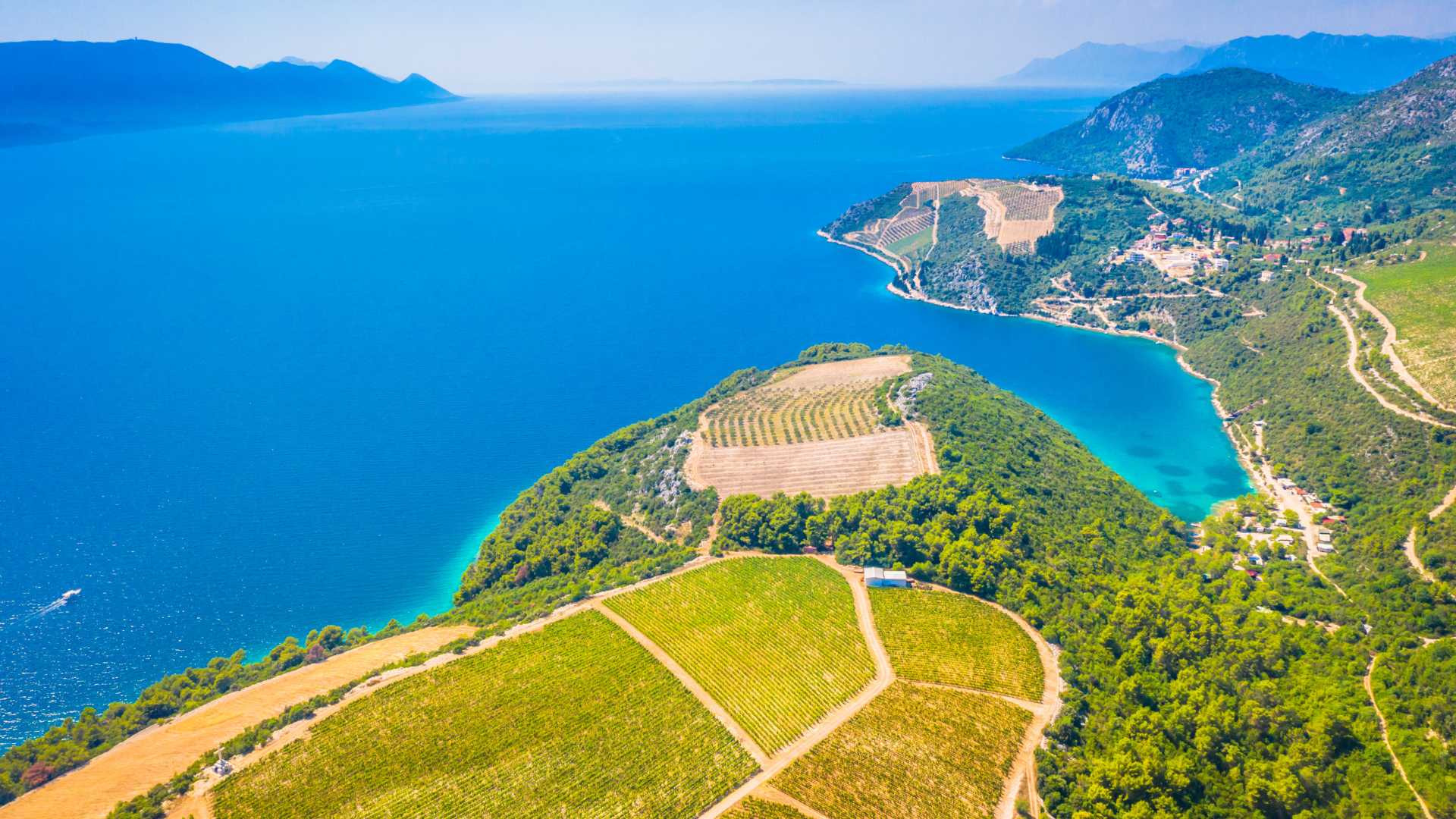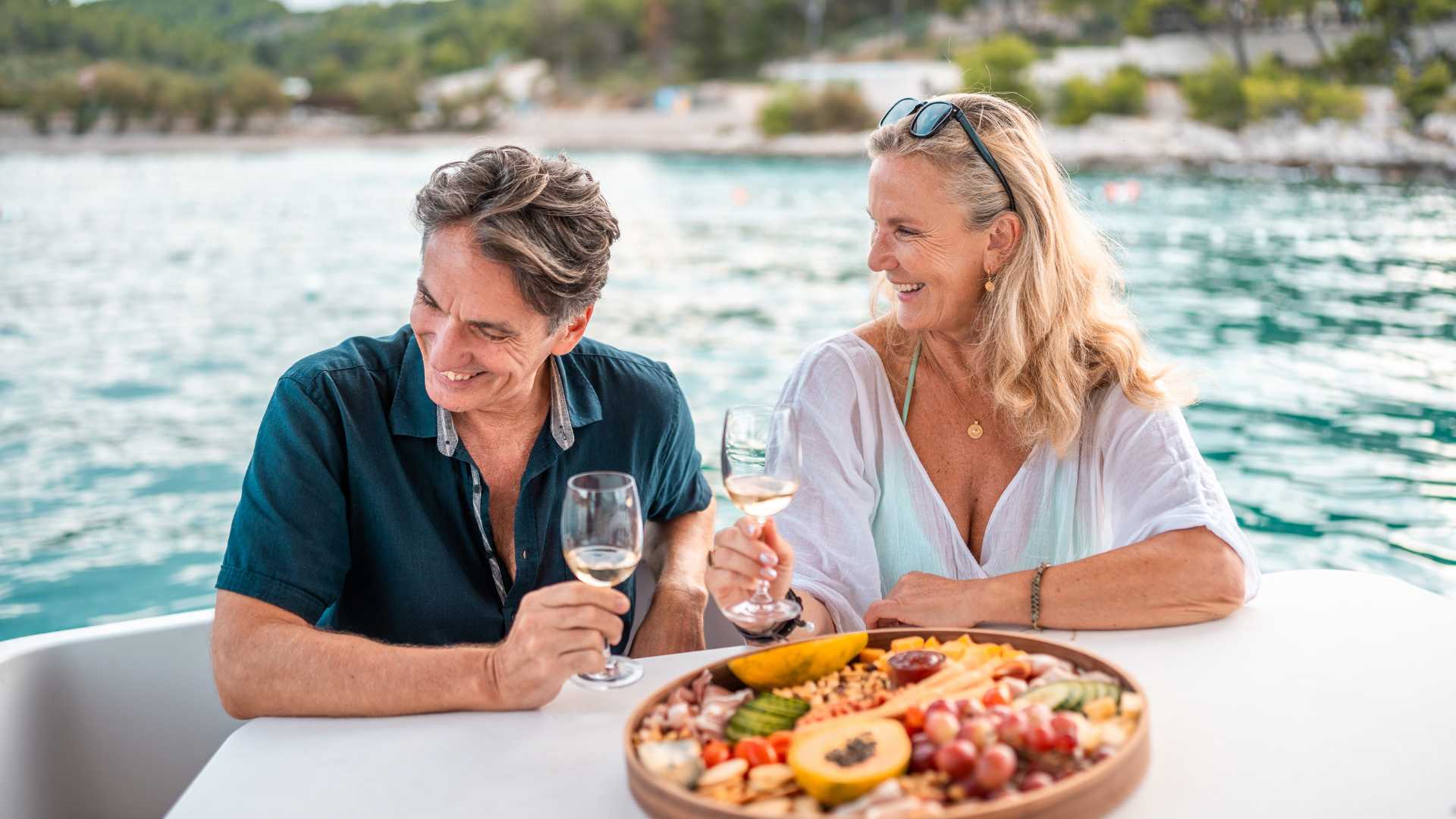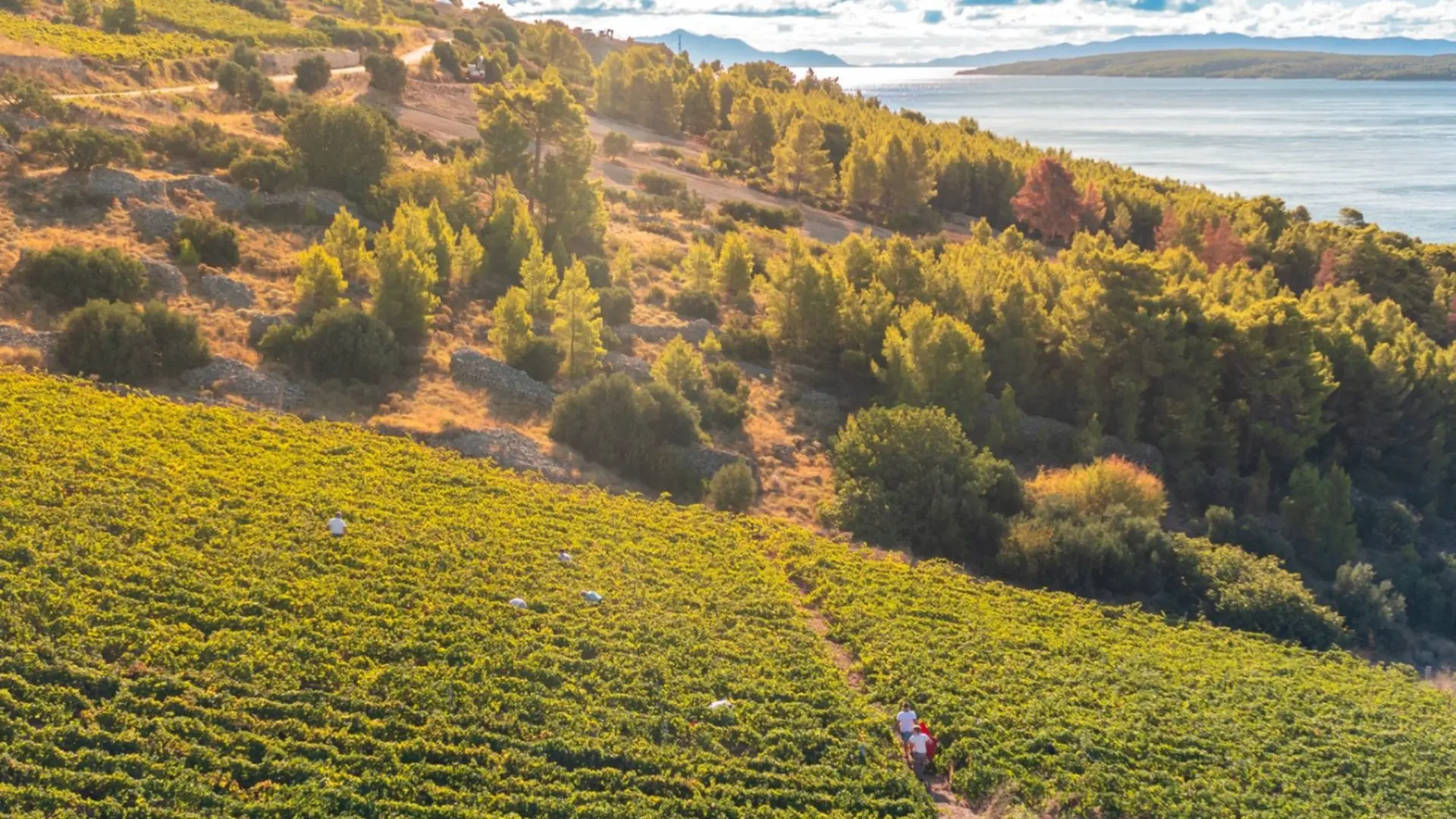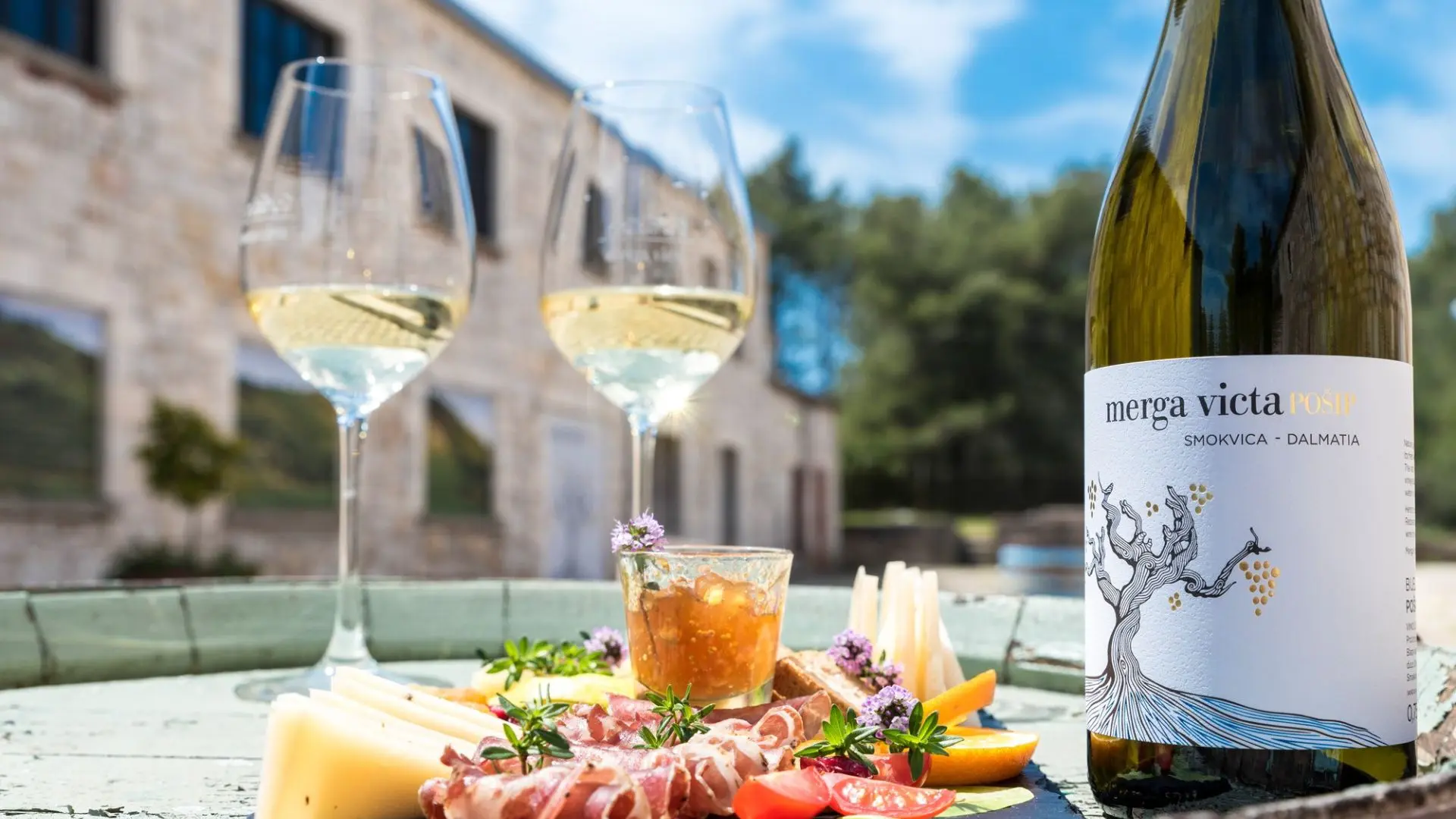There are grapes, and then there are legends. In the sun-drenched, stone-laced vineyards of Dalmatia, nestled between the azure Adriatic Sea and craggy karst hills, one grape reigns with a proud, unruly spirit: Plavac Mali.
It’s not merely a grape variety; it’s an identity - a living, breathing testament to the resilience of Croatian winegrowers and the timeless rhythm of life along the coast. To truly understand Croatian wine, one must taste Plavac Mali. To truly love it, one must return to it, again and again. No other grape captures the heartbeat of this region so completely: its sun, sea, soil, and soul.
Rooted in History, Shaped by the Sea
Plavac Mali - which translates to ‘little blue,’ referring to its small, deeply colored berries - is Croatia’s most widely planted red grape. It is the bold, rugged soul of Dalmatian winemaking, an heirloom of centuries of labor on the wind-swept slopes of coastal Croatia and its islands. Over generations, this grape has become a symbol of tradition and perseverance, embodying the marriage of man and nature in one of Europe’s most breathtaking wine regions.
Its story, however, doesn’t begin and end in Croatia. DNA research has uncovered that Plavac Mali is the natural child of Crljenak Kaštelanski (known globally as Zinfandel or Primitivo) and Dobričić, another local variety. This connection links the Dalmatian coast to both California and Southern Italy, showing that Croatian wine heritage is not isolated, but an integral part of global viticultural history. And yet, Plavac Mali expresses something entirely its own: the mineral edge of stone terraces, the salt-laced wind of the Adriatic, and the heat of long, dry summers.
Taming a Wild Child
Plavac Mali is definitely a ‘wild child’. It ripens late, thrives in poor, rocky soil, and flourishes in vineyards that cling to steep, sun-baked slopes. This is not a grape for the faint-hearted. It requires commitment, often hand-harvesting, and constant care. But those who persist are rewarded with something extraordinary.
On the famed southern slopes of the Pelješac Peninsula, in appellations like Dingač and Postup, or on the islands of Hvar, Vis, and Brač, Plavac Mali flourishes with defiant grace. But the grape responds with pretty dramatic wines: deeply structured, and inky, with intense flavors of dried figs, black cherry, dark plum, tobacco, Mediterranean herbs, and earthy spice. These are not wines that whisper. They sing in a deep baritone, with the gravitas of age-old tradition.
And yet, in the hands of highly skilled winemakers, Plavac Mali is also capable of achieving elegance. When tamed, its boldness gives way to complexity, finesse, and a uniquely Croatian expression of terroir.

Peljesac
The Spirit of the Growers
To grow Plavac Mali is to embrace a way of life. Dalmatian winegrowers are philosophers in the vineyard - stoic, wise, often weathered by sun and wind, and deeply tied to the land. Their work is not industrial. It is intimate, ancestral, and respectful of nature. In many cases, families have cultivated the same parcels of land for generations, passing down not only knowledge but also a deep emotional connection to their vines.
These growers are not driven by trends or market forces. They are guided by intuition, seasons, and a profound understanding of their soil. They speak of wine in terms of stories, songs, and memories, not spreadsheets. Their wines are not manufactured - they are lived.
To drink Plavac Mali is to share in that life: to taste the salt on the skin, the callouses on the hand, the hush of dusk over stone terraces. It is wine as a cultural artefact, a human experience.
Where to Taste Plavac Mali
Pelješac Peninsula
Perhaps the spiritual home of Plavac Mali, the Pelješac Peninsula offers dramatic, terraced vineyards that plunge into the Adriatic Sea. The Dingač and Postup regions are world-renowned for producing structured, age-worthy wines. Wineries such as Miloš, Grgić Vina, Križ, Matuško, and Saints Hills are essential stops. Here, the wines are robust, sun-drenched, and deeply mineral, reflecting both the harsh terrain and the generosity of the Dalmatian sun.
Island of Hvar
Hvar is more than just a summer destination. Its southern vineyards, especially around Sveta Nedjelja, are home to Zlatan Otok, Tomić, Carić, and PZ Svirče. These producers blend tradition and innovation, crafting wines that range from classic powerhouses to elegant, terroir-driven styles. The views are stunning, and the wines are even more so.
Island of Brač
Brač brings a different dimension to Plavac Mali. Slightly cooler and more restrained, the wines here lean toward freshness and balance, especially from producers like Stina in Bol. This is where modern Croatian winemaking meets island serenity.
Island of Vis
Vis is still off the beaten path, but its wines are gaining ground. Lipanović leads the charge with a rendition of Plavac Mali which is aromatic, and full of character, reflecting the wildness and beauty of this unspoiled island.
Southern Dalmatia & Konavle
Near the southern tip, close to Dubrovnik, producers such as Crvik, Karaman, and Brajević are creating more delicate, mineral-focused expressions of Plavac Mali. These wines provide a refreshing contrast to the bolder island styles, offering a unique and exciting experience for adventurous palates.
What to Eat with Plavac Mali
Plavac Mali is made for food. Its tannic structure and bold flavors make it a perfect match for traditional Dalmatian dishes.
Peka: A slow-cooked dish of lamb or octopus baked with potatoes, onions, and herbs under an iron dome. The smoky, rich flavors pair beautifully with the depth of Plavac Mali.
Pašticada: A marinated beef stew simmered in wine, prunes, and spices, served with gnocchi. It’s an iconic match for the grape’s bold personality.
Grilled Adriatic fish: Especially tuna or swordfish with wild herbs and olive oil, which balance the wine’s fruit and spice.
Aged cheeses: Like the famous Pag cheese or Livanjski cheese, which stands up to the wine’s strength and brings out its complexity.
This is a wine that celebrates life. It’s meant to be shared around a full table, with laughter, music, and the smell of salt in the air.

Plavac Mali and the Future
As Croatia steps out of the shadows and into the global wine scene, Plavac Mali leads the charge. Winemakers are now experimenting with fermentation techniques, aging vessels, and vineyard practices to better showcase its versatility.
Some producers are aiming for lower alcohol, higher acidity, and more elegance, while others dive deep into natural wine methods and amphora aging. Yet no matter the path, the essence remains the same: Plavac Mali is a grape of place.
Its future is bright not because it adapts to trends, but because it stands firm in its identity. As the world moves toward authentic, terroir-driven wines, Plavac Mali is poised to captivate a new generation of wine lovers.

In Conclusion: Why It Matters
In a world overflowing with generic wines, Plavac Mali dares to be distinctive. It is a wine of character, place, and people. It does not whisper or flatter. It echoes the essence of stone and sun, sea and spirit. To drink it is to travel without moving, to feel the pulse of Dalmatia in your veins. It’s not just the heart of Croatian wine, simply it’s the blood, the breath, the rhythm.
So come - walk the vineyards, taste the wines, meet the growers. Let the hush of a Dalmatian evening wash over you, a glass of Plavac Mali cradled in your hand. Because once you do, you’ll understand: Plavac Mali doesn’t just belong to Croatia. It belongs to everyone who believes that wine can tell a story.
Winera invites you to indulge in an adventure through Dalmatia, the birthplace of the legendary Plavac Mali. Dive deep into Croatia’s dynamic winemaking culture, where sun-drenched vineyards and dramatic coastlines set the stage for a wine experience like no other. Whether you’re savoring intimate vineyard tours on the iconic Pelješac Peninsula or basking in the breathtaking beauty of Hvar, Brač, or Vis, Winera connects you to the best of Dalmatia’s wines and its passionate winemakers.
For a memorable experience, visit Carić Vina on Hvar, where you can enjoy guided tastings in a traditional setting, or Black Island Winery on Korčula, famous for its award-winning Pošip and local snacks. These wineries offer the best of island hospitality—great wine, delicious food, and the true spirit of the Adriatic.

Ready to taste the essence of Dalmatia? Book your adventure with Winera today.
Hashtags:
#Winera #Travellier #PlavacMali #CroatianWine #DalmatianVineyards #AdriaticGrape #Dalmatia #DalmatianWineCulture #TerroirDriven #TasteCroatia #VineyardStories #WineraAdventures #WineAndFoodPairing #SunDrenchedWines